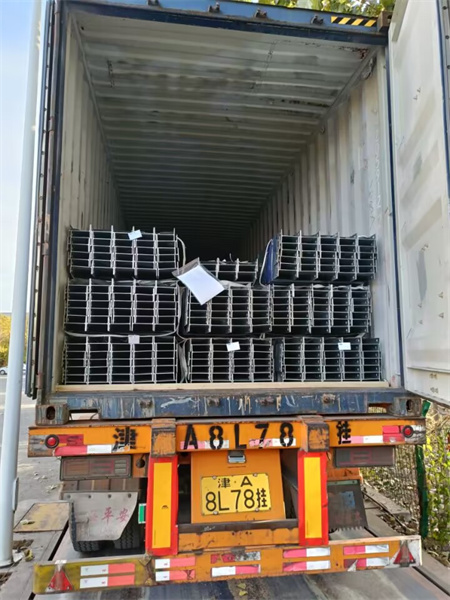Introduction: H-beams, also known as I-beams, are essential components in the construction industry, providing structural support for buildings and infrastructure projects. Shipping H-beams involves a series of necessary steps to ensure their safe and efficient transport from the manufacturing plant to the construction site. In this article, we will explore the process of shipping H-beams, covering aspects such as packaging, transportation, documentation, and quality control measures.
- Packaging: Proper packaging is vital to protect H-beams during transit. The beams are grouped together and securely fastened with steel straps or bands to prevent any movement or shifting. Additionally, wooden or steel saddles are used to maintain stability and minimize damage. Each bundle is clearly labeled with essential information like dimensions, weight, and destination.
- Transportation: Choosing the appropriate mode of transportation is crucial for shipping H-beams. Generally, flatbed trucks or specialized heavy-haul carriers are used due to their capacity to handle the length and weight of the H-beams. Detailed route planning considers factors such as road conditions, height restrictions, and load capacity limitations to ensure a safe and smooth transportation process.
- Documentation: Accurate documentation is essential in the shipping process to facilitate smooth operations. This includes preparing a bill of lading, commercial invoice, packing list, and any additional customs documents required for international shipments. These documents provide crucial information about the shipment, including its value, quantity, and details necessary for customs clearance.
- Quality Control: Maintaining strict quality control measures ensures that only H-beams of the highest quality are shipped. Before loading the beams onto the transportation vehicle, a thorough inspection is conducted. This includes checking for any defects, such as cracks, deformities, or surface imperfections. Measurements are taken to verify dimensional accuracy against engineering specifications. Only beams that meet the required standards are approved for shipping.
- Customs Clearance: For international shipments, customs clearance is an important step in the process. The necessary customs procedures and documentation requirements vary for each country. Compliance with import regulations and providing accurate and complete documents, including commercial invoices and packing lists, is essential to avoid delays or penalties. Cooperation with customs authorities ensures a smooth clearance process.
- Delivery and Unloading: Upon arrival at the construction site or designated storage area, the H-beams are unloaded using appropriate equipment, such as cranes or forklifts. Careful handling techniques and adherence to safety protocols are employed to prevent any damage to the beams or harm to personnel. The H-beams are then placed in predetermined storage areas or directly utilized in construction projects as required.
Conclusion: Shipping H-beams involves meticulous planning, attention to detail, and compliance with regulatory requirements. From proper packaging and selection of suitable transportation methods to accurate documentation and strict quality control measures, each step in the shipping process is crucial to ensure the safe and efficient delivery of H-beams. By following these procedures, we can effectively transport H-beams to construction sites, contributing to successful and timely completion of ects.
Post time: Oct-27-2023

